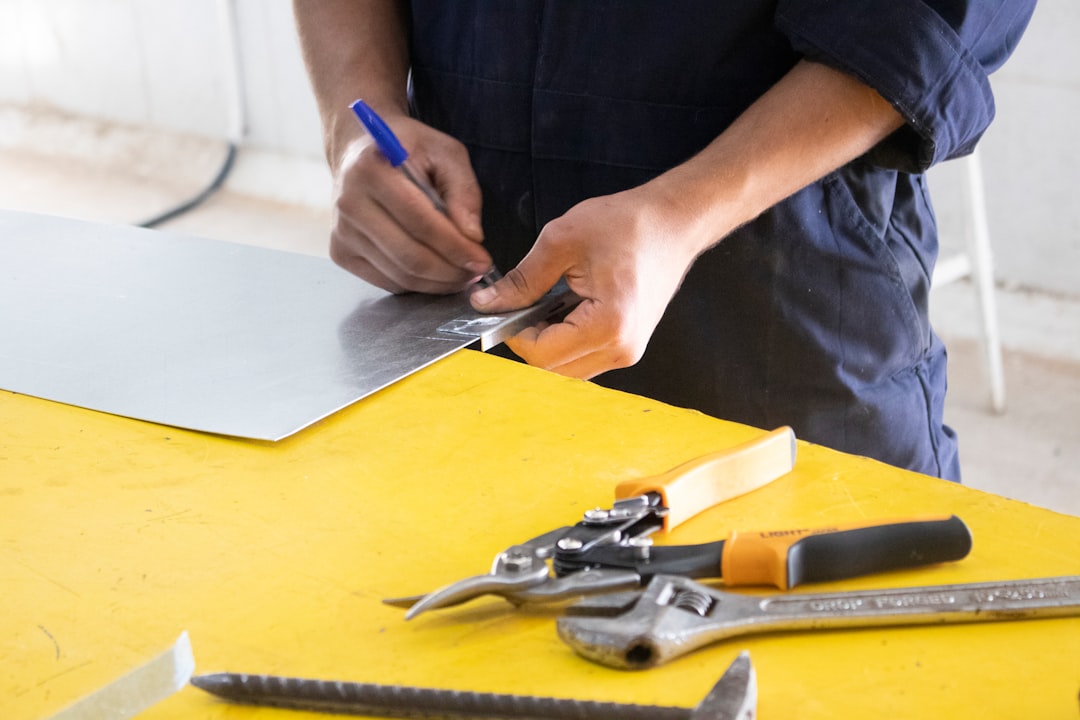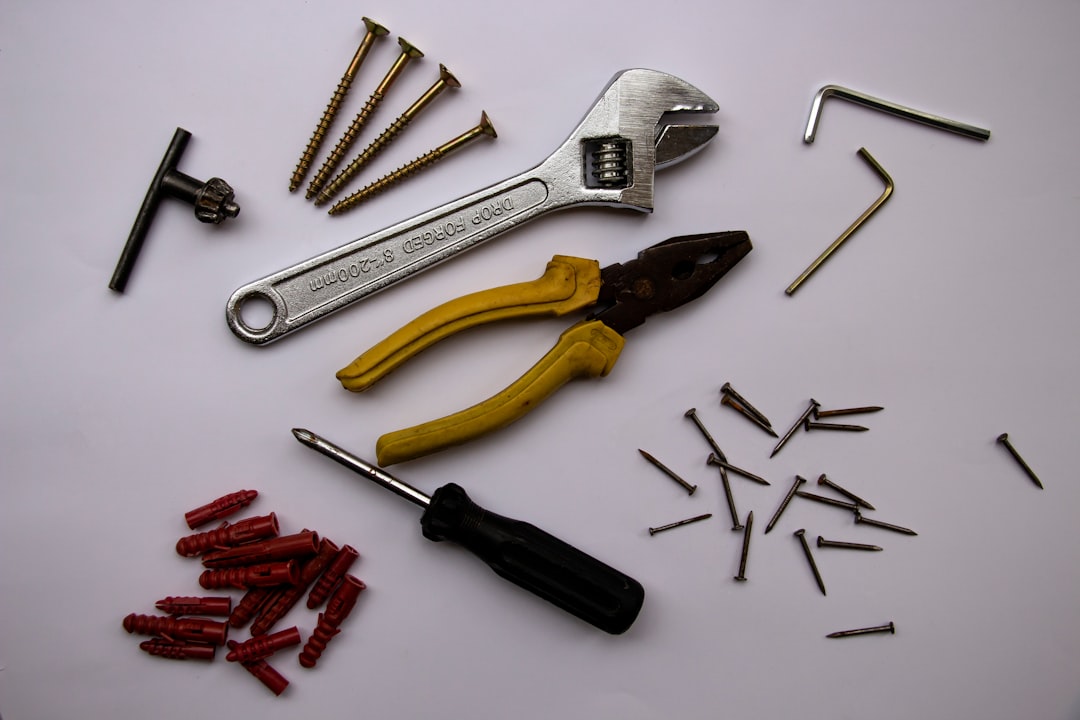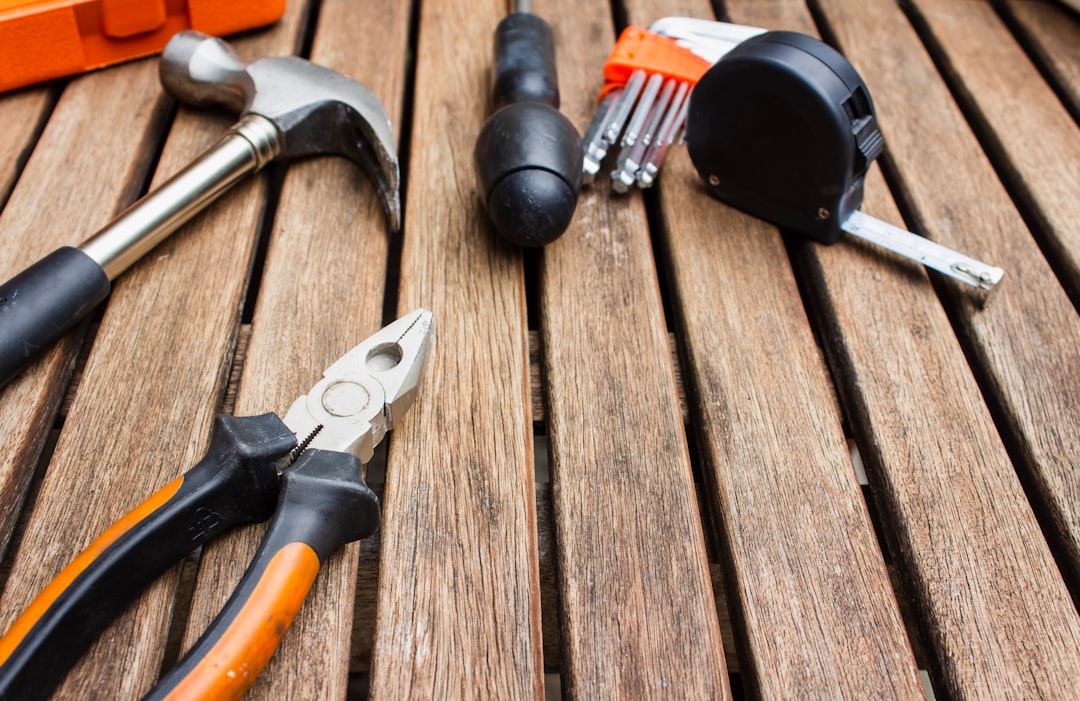

Engage prospects with a scan and streamline customer engagement with FREE QR code marketing tools by Sona – no strings attached!
Create a Free QR CodeFree consultation

No commitment

Engage prospects with a scan and streamline customer engagement with FREE QR code marketing tools by Sona – no strings attached!
Create a Free QR CodeFree consultation

No commitment
In today's digitally connected world, the home repair services industry faces mounting pressure to meet homeowner expectations for speed, transparency, and seamless experiences. Many service providers still struggle with obstacles such as missing high-value prospects who engage offline, limited visibility into how potential customers interact with marketing materials, and challenges in capturing timely lead data before opportunities disappear. Homeowners searching for reliable repair solutions increasingly expect immediate access to information, rapid appointment booking, and easy ways to communicate their needs, which puts additional strain on businesses to modernize traditional analog workflows.
QR codes have evolved from simple curiosities to indispensable tools in home repair service marketing, bridging the persistent gap between printed materials, service vehicles, signage, and digital platforms. They provide practical pathways for converting foot traffic and offline interest into actionable digital engagement. This empowers businesses to identify previously anonymous prospects, fast-track appointment requests, and capture critical lead details before they slip through the cracks. With QR code-enabled campaigns, home repair professionals gain new insight into which offline touchpoints contribute most to booked jobs and can prioritize follow-up where intent is strongest. For a broader overview, explore QR codes in marketing.
By integrating QR technology throughout their operations, home repair organizations can close the loop from awareness to engagement. QR codes offer instant access to home maintenance tips, streamline emergency service requests, and capture customer feedback at moments of peak relevance. This guide explores proven QR strategies for addressing common pain points, highlights emerging best practices, and demonstrates how smarter QR usage can help reduce missed opportunities, improve cross-sell and upsell efforts, and create the connected experience that today’s homeowners expect.

For home repair service businesses, the disconnect between offline engagement and digital opportunity is a frequent source of lost leads. Prospects may browse flyers, scan vehicle signage, or take a business card, yet too often remain untracked in CRMs and slip away uncontacted. QR codes address this by providing direct, trackable digital pathways at every customer touchpoint. They allow teams to replace friction-filled analog steps with smooth, measurable digital actions that meet homeowners at their moment of need.
To implement QR codes effectively, start by mapping where customers encounter your brand in the real world. Replace or augment analog materials like paper estimate forms, voicemail-only numbers, and generic brochures with QR-enabled experiences that capture context, intent, and contact details. Consider using Google Forms QR codes to streamline data capture. Set clear success metrics tied to business impact, such as reducing first-response time to under five minutes or increasing same-day bookings by a specific percentage. Then deploy codes in the field, monitor performance, and use the insights to improve placement and messaging.
Modern tools like Sona QR now allow businesses to automate these flows, update destinations on the fly, and enrich CRMs with every scan. This ensures fewer high-value opportunities fall through the cracks and more offline engagements convert into qualified, revenue-ready leads.

Home repair companies have long struggled with a lack of visibility into how potential customers interact with offline marketing assets. When a homeowner notices a plumbing leak and glances at a service truck or picks up a flyer, intent is often high yet fleeting. Traditional methods require extra effort, such as typing a URL or calling a phone number, which introduces friction and delay. By the time a prospect is ready to act, a competitor may already have answered the call. For context on field applications, see these home repair QR codes examples.
QR codes close this offline-to-online gap by enabling immediate action. A single scan can open a pre-filled estimate form, launch a live chat, or initiate a call with a dispatch line. Dynamic QR codes are particularly valuable, since you can change the destination without reprinting materials. This flexibility keeps campaigns relevant and reduces waste. Combine that with real-time tracking to see which messages, placements, and neighborhoods drive the most revenue, and you have a cost-effective way to optimize spend and focus on the channels that move the needle.
For home repair teams, this adds up to more timely leads, stronger attribution, and the ability to continuously improve messaging and placement. The result is a measurable advantage in speed to lead and conversion rate, especially in high-intent, time-sensitive situations.

Home repair businesses engage homeowners across a wide range of moments, from initial discovery to service follow-up. Because each moment calls for a different action, it is important to choose QR formats that fit the scenario. Focus on formats that streamline booking, simplify communication, and preserve context while syncing everything back to your CRM.
Start by identifying the action a homeowner is most likely to take in each context. On a truck or yard sign, they might request an emergency visit. On an invoice, they might leave a review or schedule maintenance. During a seasonal tune-up campaign, they might download a guide or register a warranty. Match the format to the most probable action and keep the path as short as possible.
Dynamic QR codes generated with Sona QR can be managed centrally, which lets teams change destinations as offers evolve and campaigns shift seasonally. Use dynamic for anything that requires tracking, testing, or future updates, and reserve static codes for evergreen resources that never change. Browse ideas in Sona QR’s use case library.

Home repair providers often underestimate the potential of existing physical assets and printed materials. The right scannable placements can transform common items into always-on lead sources that gather intent data and feed your pipeline, as shown for building service providers. Think of your field presence as a network of billboards that can all convert interest into action, then use QR codes to make those billboards measurable.
An effective approach involves auditing every offline touchpoint and ranking each for visibility, proximity to decision moments, and likelihood of scan. From there, assign a unique, purposeful code with a clear benefit-driven call to action. You will start to see which items pull their weight, which need new messaging, and which deserve a budget boost.
Once you illuminate these offline-to-online pathways, you can translate foot traffic and casual interest into measurable pipelines. This also makes it easier to justify spend on print and signage since you can connect placements to results.

Strategic use of QR codes can eliminate delays, capture higher quality data, and nurture customers across the entire lifecycle. The key is to align each scan with a specific business outcome and then design the destination experience to deliver that outcome with minimal friction. Think in terms of moments: discovery, urgent needs, and post-service engagement. For more inspiration, review these ideas for home repair and maintenance.
In practice, this means building use cases that serve both homeowners and your operations team. Homeowners want clarity, speed, and confidence. Your team needs structured data, clear prioritization, and a way to track outcomes. Well-designed QR experiences meet both sets of needs and lift conversion metrics as a result.
When these use cases are coordinated, you not only boost lead volume but also enhance the customer experience. Each scan becomes a helpful step forward, which improves satisfaction and builds trust.
Many home repair firms allow valuable offline intent signals to remain anonymous. QR scans offer a remedy by turning physical interactions into digital audience segments you can target with precision. Each scan carries context: where it happened, what the person likely wanted, and how urgent the need might be. By tagging and organizing these signals, you can nurture prospects based on actual behavior rather than guesswork. Learn why signals matter in Sona’s intent primer, The Essential Guide to Intent Data.
Start by assigning distinct codes for key moments in the buying journey. Use one set for awareness, such as community event materials, another for consideration, such as estimates and brochures, and a third for conversion, such as coupons and financing offers. With Sona QR, each code becomes a smart entry point into your funnel that automatically adds contacts to the correct segment and triggers the next best action.
Specific to home repair, consider segments such as remodel researchers, warranty registrants, seasonal maintenance seekers, and emergency help scanners. Each group responds best to different offers, and QR-enabled retargeting lets you tailor the journey accordingly. For campaign ideas, try Sona’s playbook on intent-driven retargeting.
QR codes act as connective tissue across channels that traditionally operate in isolation. They bring print and field marketing into the same data and optimization conversation as digital campaigns. This helps you attribute revenue more accurately and orchestrate timely follow-up, which is essential in a competitive, time-sensitive category like home repair. For frameworks and measurement tips, read Sona’s guide to offline attribution.
A connected experience might begin with a neighborhood postcard, continue with a scan-to-estimate on a yard sign, and end with a review request on an invoice. At each step, the code captures data and moves the customer forward. With a centralized platform like Sona QR, you can manage all codes, monitor performance, and sync scan data with your CRM and ad platforms to maintain continuity.
Start creating QR codes for free: https://www.sqr.me/register
QR campaigns are most effective when they follow a clear plan from goal setting to optimization. The steps below translate strategy into action while safeguarding against common pitfalls like vague CTAs or poor scannability. Each step includes practical considerations for home repair scenarios and the tools that can make execution easier.
Choose a use case that aligns with a pressing business goal, such as accelerating emergency service capture from truck signage or boosting new customer appointments via door hangers in target neighborhoods. Clarify the audience, the intended action, and the measurable outcome. For example, target faster capture of emergency repair requests with a code near the rear truck panel that routes to scan-to-call or scan-to-chat.
Decide whether to use static or dynamic codes based on the need for tracking and future flexibility. Use static codes for evergreen resources like a permanent DIY guide library. Use dynamic codes for any placement where you want scan analytics, the ability to update destinations, or the option to A/B test offers.
Design codes and surrounding elements for maximum visibility, trust, and scannability. Include a benefit-led CTA such as Scan for a Free Estimate or Scan for 24-7 Emergency Help. Use branded frames, adequate whitespace, and high-contrast placement. Test scanning on the actual surfaces where the code will live, including curved or glossy truck panels.
Roll out codes on the assets most likely to be seen at decision moments, such as vehicle panels, front-door flyers, invoices, and job site signage. Stagger deployment to isolate performance by channel, then scale high performers. Train technicians and office staff to point out codes and explain the benefit to encourage scanning.
Monitor scans, clicks, and conversions in real time. Attribute bookings and revenue back to the original scan source to validate ROI. Iterate rapidly on creative, placements, and CTAs based on performance. Use the insights to double down on channels that consistently surface high-intent prospects.
Traditional home repair businesses often lack insight into which marketing touchpoints most influence lead generation and conversion. Without connecting the dots from scan to appointment to invoice, optimization remains guesswork. QR-driven analytics bridge this gap by tying real-world interactions to measurable outcomes across the funnel.
A strong analytics setup captures each scan, associates it with a campaign and placement, and follows the contact through booking, service completion, and review. The result is a full-funnel view that reveals which trucks, neighborhoods, or messages perform best. With that knowledge, teams can confidently shift budgets and refine tactics to improve ROI.
Sona QR captures real-world engagement at the scan and click level, while Sona helps connect that engagement to revenue with identity resolution and multi-touch attribution. Together, they give home repair teams the clarity needed to turn QR from a novelty into a reliable growth engine.
Scaling QR success requires consistent execution and thoughtful iteration. Start with unique codes for each asset to ensure reliable tracking, then integrate automation so every scan triggers a helpful next step. Educate staff on how to promote scans and explain the benefits clearly to homeowners.
Creative placements can keep your brand top of mind and make it easy for customers to act when issues arise. Consider reminder stickers inside kitchen cabinets near sink shutoff valves or durable magnets on breaker panels that link to quick troubleshooting steps and scan-to-call support. Try branded stickers and labels for lasting visibility.
When these practices are in place, each scan becomes more than a click. It becomes a structured signal that powers timely communication, smart retargeting, and measurable growth.
The most persuasive evidence of QR impact comes from real deployments in the field. Across plumbing, HVAC, electrical, and handyman services, teams are translating offline attention into digital actions that shorten time to service and increase customer lifetime value.
Consider how small changes to familiar materials create outsized results. In many cases, success comes from improving an existing asset rather than launching a complex new initiative. The examples below illustrate the range of outcomes that QR codes can drive in home repair contexts.
These examples demonstrate how QR codes generate measurable improvements across acquisition, service, and advocacy. The most successful teams embed QR into daily operations and keep iterating based on performance data.
Effective QR implementation is a mix of good design, smart placement, and operational discipline. Many pitfalls are avoidable with a little planning. The goal is to make scanning effortless and the destination experience satisfying, while feeding data back into systems that support fast follow-up.
Begin with a quarterly audit of all active QR codes and their destinations. Confirm that the pages are current, mobile friendly, and aligned with the intent signaled by the placement. This habit prevents the common failure of sending scanners to generic or outdated pages that undercut trust.
As the home repair services sector evolves, QR codes have proven to be far more than digital shortcuts. They create seamless, high-value connections between offline interactions and digital actions. By applying QR strategies grounded in real-world business challenges, such as visibility gaps, delayed or missed lead capture, and poor targeting precision, providers can ensure every customer touchpoint is actionable and measurable. Thoughtful QR deployment does not just deliver instant convenience for homeowners. It enables revenue-focused marketing, personalized outreach, and the agility needed to meet shifting consumer expectations. Providers who embrace QR-driven transformation put themselves in a position to recapture lost opportunities, nurture stronger relationships, and stand out in an increasingly competitive landscape.
QR codes have revolutionized home repair services by transforming traditional customer interactions into seamless, measurable touchpoints. From simplifying appointment scheduling and providing instant access to repair guides, to enabling quick feedback and follow-ups, QR codes enhance customer acquisition and significantly improve service experiences. Imagine your clients scanning a code to instantly access tailored repair instructions or warranty information—boosting trust and satisfaction with every scan.
With Sona QR, you can effortlessly create dynamic, trackable QR codes that update in real time without the need for reprinting. This means you stay agile, connecting every scan to valuable customer insights and revenue opportunities. No more missed leads or outdated materials—just smarter, more efficient service delivery that drives growth.
Start for free with Sona QR today and unlock the full potential of QR codes to elevate your home repair business and turn every scan into a lasting customer relationship.
Look for providers who offer fast response times, transparent communication, easy appointment booking, and use modern tools like QR codes to streamline service requests and improve customer experience.
Common needs include emergency repairs like plumbing leaks and furnace failures, routine maintenance such as HVAC tune-ups, and post-service follow-ups like warranty registrations and review requests.
The article does not specify typical home repair costs but emphasizes that efficient lead capture and service scheduling through QR codes can reduce delays and optimize service delivery.
Signs include urgent issues like water leaks or heating failures, the need for routine maintenance reminders, or the desire to schedule seasonal services and warranty registrations.
Prevent future problems by following home maintenance tips accessed via QR codes on invoices or magnets, scheduling regular tune-ups, and using reminders for filter changes and seasonal checks.
QR codes bridge offline and online interactions by enabling immediate action, such as fast appointment booking, emergency calls, and data capture, which reduces missed leads and improves customer engagement.
Place QR codes on service vehicles, door hangers, invoices, flyers, job site signage, and community event materials to capture interest at key decision moments and convert it into action.
Dynamic QR codes are valuable for tracking and updating destinations, while formats like web links, vCards, SMS or email triggers, app downloads, and forms help streamline booking, contact sharing, and data capture.
By using QR code analytics that track scans, link them to appointments and revenue, and integrate with CRM systems, companies can attribute ROI to specific campaigns and optimize spending.
Best practices include defining clear use cases, choosing the right QR code type, designing for visibility and action, deploying codes strategically, tracking performance, and regularly auditing code destinations.
Use Sona QR's trackable codes to improve customer acquisition and engagement today.
Create Your FREE Trackable QR Code in SecondsJoin results-focused teams combining Sona Platform automation with advanced Google Ads strategies to scale lead generation

Connect your existing CRM

Free Account Enrichment

No setup fees
No commitment required

Free consultation

Get a custom Google Ads roadmap for your business






Launch campaigns that generate qualified leads in 30 days or less.
